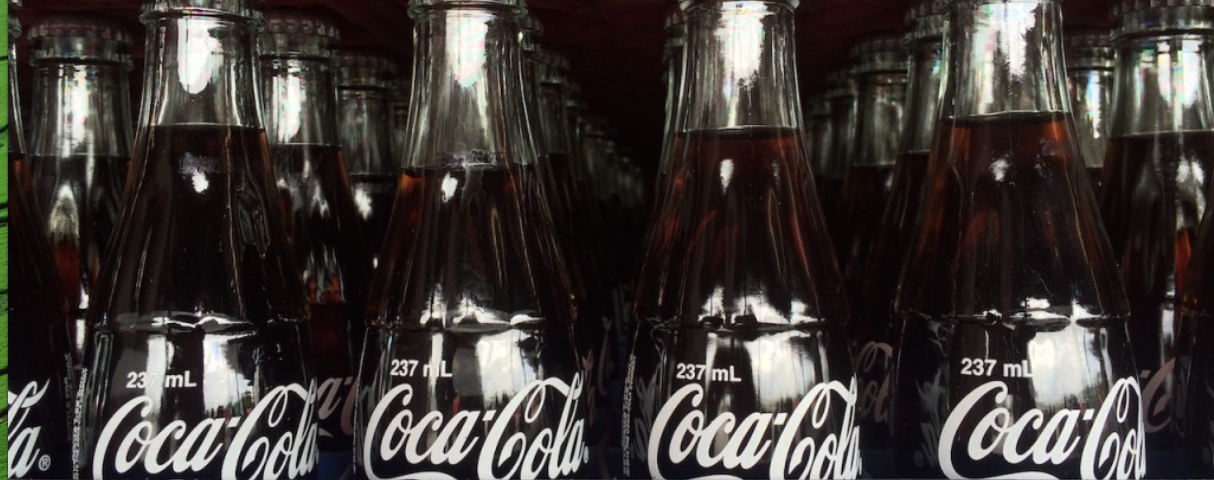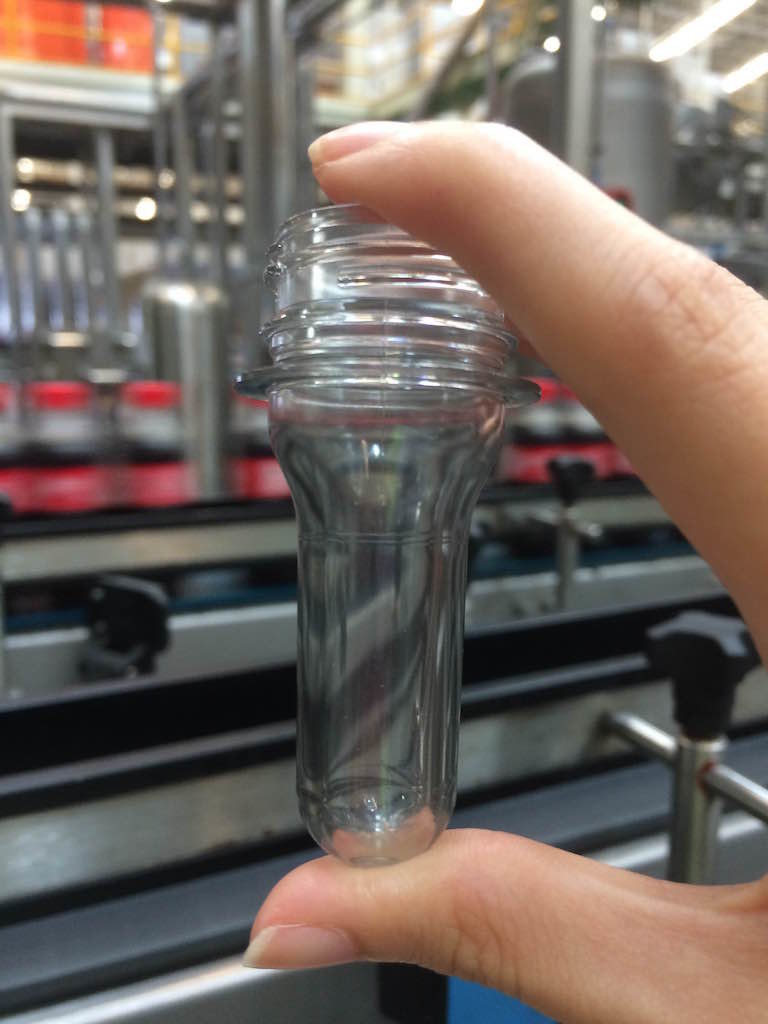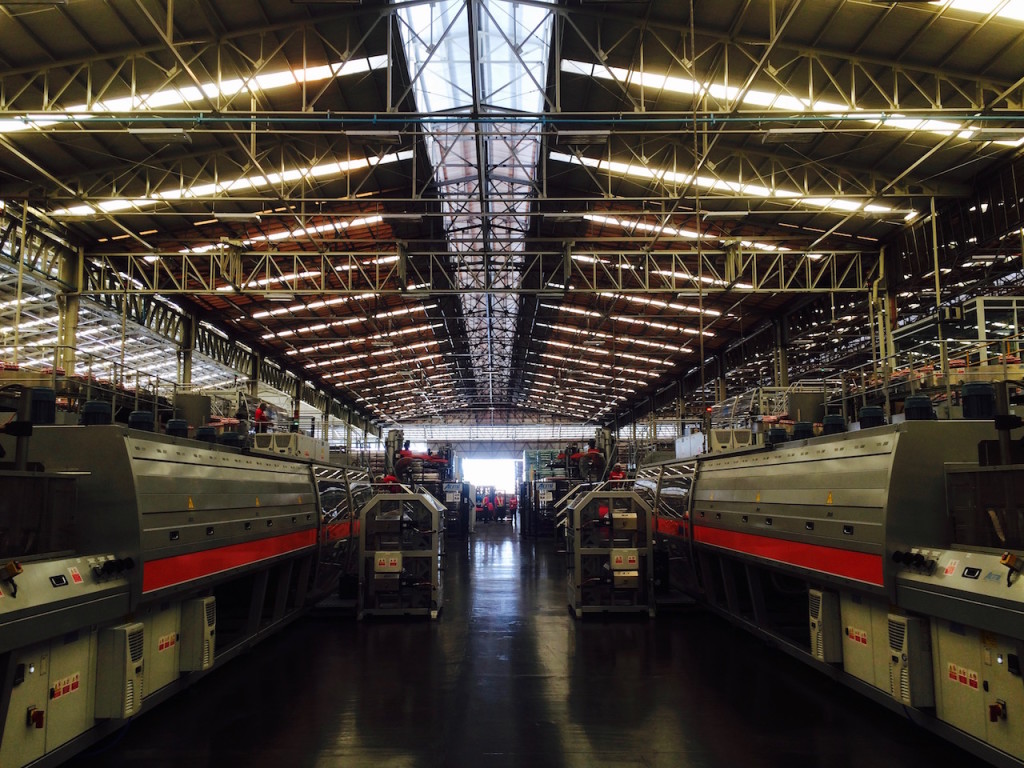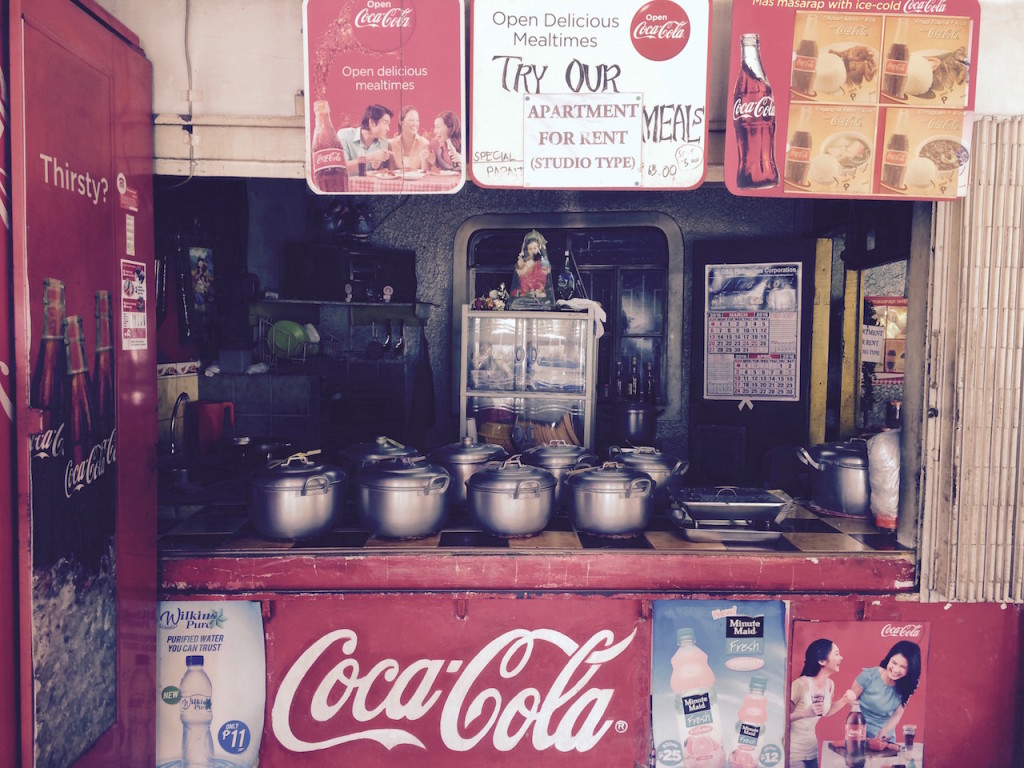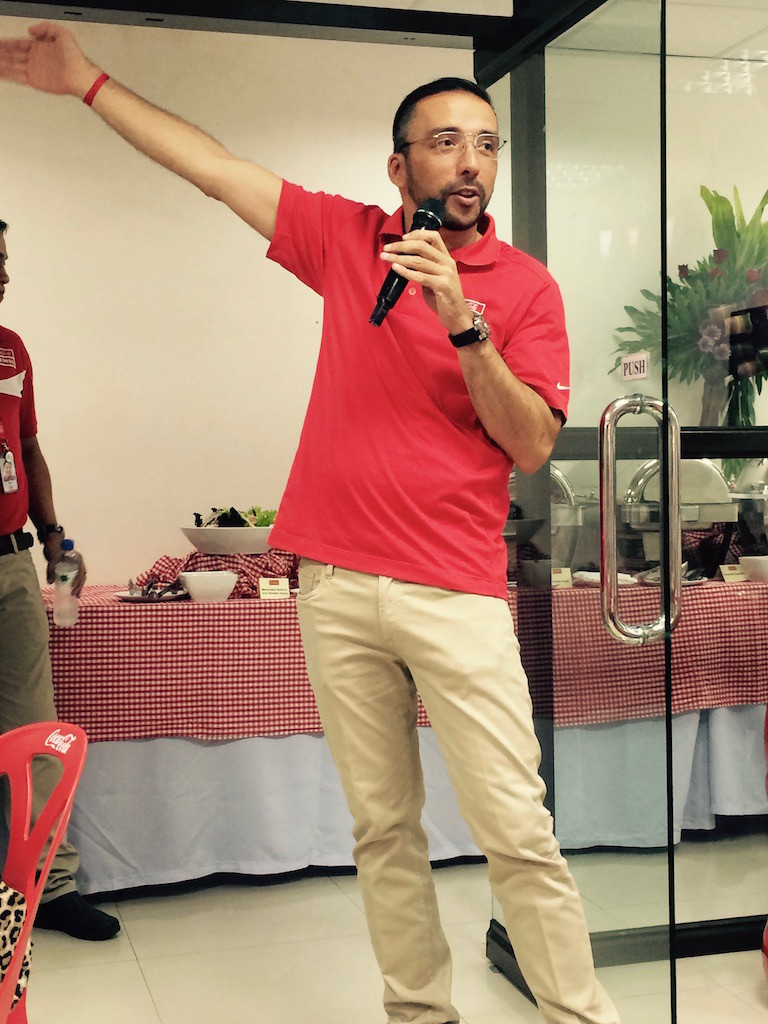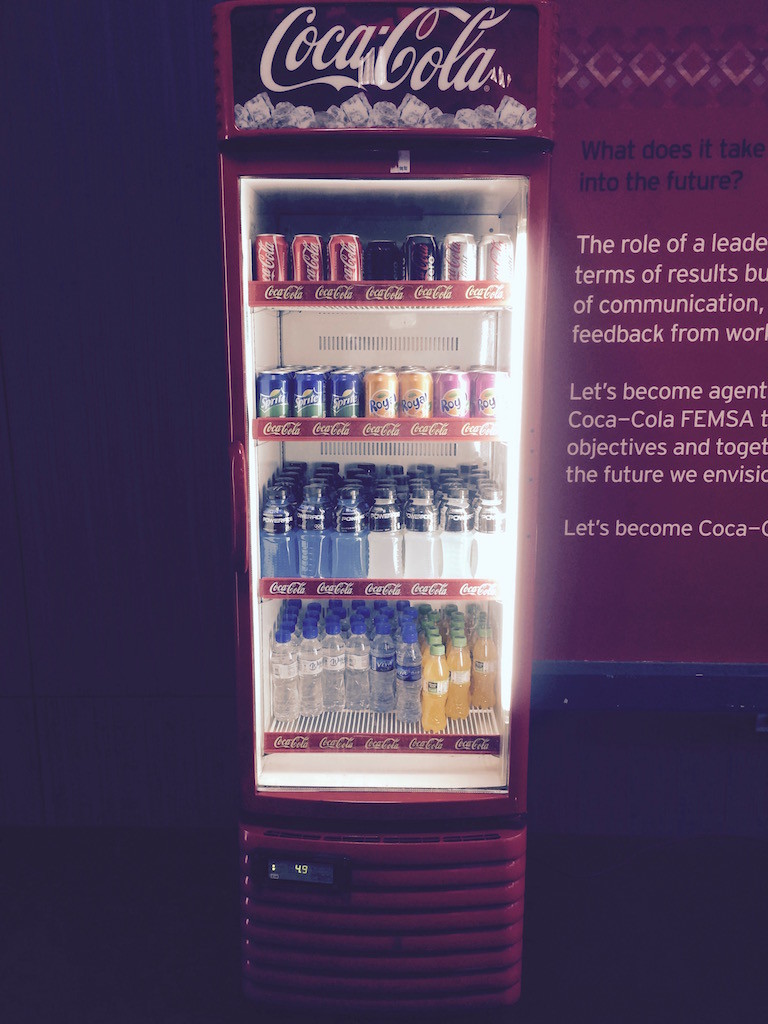All you need is love
by SARA DE LOS REYES |
“So, you’re really not going to tell us,†we say teasingly but mostly meaning it anyway.
A group of media representatives with pens, notebooks, voice recorders, and curiosity at the ready stand around Bernard Lahica, Manufacturing Unit associate director for Coke FEMSA Philippines, as he begins to enumerate the ingredients of what could be the world’s most recognizable beverage during a plant tour.
Bernard raises up his hand to begin the list. “Coke’s still mostly water of course. Then comes a unique blend of sweeteners that include natural ingredients. CO2 too, of course, for the – “
He’s interrupted by an impatient listener who asks, “The secret ingredient? What is it?†The brave soul (or sacrificial lamb) asks the million dollar question we all want answered.
“Well… love.â€
(Classic Coca-Cola bottled and ready to be enjoyed by millions of Filipinos)
Message in a bottleÂ
Sure, Coke has become the generic term for refreshment among Filipinos. It’s most definitely an icon in pop culture. It’s also always around in most, if not all, Pinoy social gatherings. The brand has generated thousands of jobs and brought in millions in revenue, but the financial, tangible and material successes are only second place in the heart of a Coke employee.
Cat Avelino, External Communications & CSR manager, says that it really is important to them that more people come to realize the role Coke has played in the lives of Filipinos, especially those whose lives have exponentially improved by selling Coke products. “We are more than just our products. Really, every time you see a beverage, it involves hundreds and thousands of lives. Not just those of the people who make it, or those that distribute or sell it. That’s really what our product is made of,” she says.
Our plant tour was a literal walkthrough of the Coke story. I say “story†because Coke’s presence in the Philippines has exceeded expectations – and definitions – of success.
Starting with the brewing and mixing process, followed by the quality assurance, bottling, packaging and warehousing phases, the whole thing was a marvel of efficiency and delight. It would be dishonest to say that our group, a group of fully grown adults, didn’t squeal with delight upon seeing little bottles moving round and round and ceaselessly, going from one conveyor belt to the other being transported up, down, sideways and over, then finally all ending up in our hands, ready to drink.
The Coke plants adhere to local and international quality standards of food and beverage, as well as stringent manufacturing safety standards to ensure that both product and plant employees stay a hundred percent safe during their stay at the plants. Canned and glass bottle beverages are all produced here, including their carbonated beverages, juice, sports drinks and water.
(Cat Avelino explaining how Coke FEMSA has touched the lives of Filipinos in many ways)
(This little piece of plastic is heated and expanded with air to become the little bottle of Coke we can recognize from miles away)
(Coke bottles ready to be crated and transported)
(Conveyor belts and packing equipment as far as the eye can see prepare bottles for transport to stores)
‘Sari-sari stories’
The last chapter of the tour definitely had to be what mattered most. Our group was shuttled to a nearby sari-sari store (a local convenience store) for a quick chat with Fely, the store’s owner, whose story was packed with more fizz than a 2 liter bottle.
She tells us she started with a capital of P5,000 to start her sari-sari store on the side of the highway. Back then, all the store had were soft drinks and a handful of snacks to offer. There were no chairs and tables, no decor whatsoever, not enough lights or anything that might otherwise attract people to swing by her little spot.
She might’ve given up on the business altogether, only, the soft drinks were always a bestseller. A cold Coke for the tired driver and overheating passerby always did the trick. Five, seven pesos here and there may have seemed like nothing in those days, but it’s been 20 years since then, and she and the family are doing great.
Two decades have passed since Fely was in such a tight spot. Now, her store has expanded to include a carinderia (a canteen) and has people from all over coming back for her special papaitan and other lunch dishes. (Coke plant employees highly recommend her cooking!) She has a sizeable home and staff to help her too. Fely makes more than she ever thought she could when it was only just her, her little red cooler of bubbly drinks and dreams yet to be fulfilled.
(What’s cooking: The countertop displaying Fely’s lunch choices in her carinderia)
Carmen, another sari-sari store owner and mother of three is also deeply grateful for Coke’s help. With saved up money from selling Coke products, two of her children earned college degrees from the University of the Philippines – Los Baños, while the other is an alumnus of the University of Asia and the Pacific and a master’s degree holder.
From making sure the drinks taste right to ensuring that bottles are clean and sparkly, everything Coke employees at the plants do ends with these stories. This is what gets them ready for work in the morning. This to them, is true success.
In the words of Juan Carlos Dominguez, director for human resources and corporate affairs, â€it is seeing success stores such as these that push us to keep improving everyday … Our business is intertwined with the lives of millions of Filipinos, from those that are employed by us, supply raw materials to us and those whose livelihoods include delivering or selling our products. Their success is our success and we want to support them every step of the way.â€
These are only stories from two sari-sari stores owners. Overall, Coke supplies their products to 800,000 sari-sari stores across the country. Just imagine how many more lives Coke has made better.
(Juan Carlos Dominguez welcoming the media)
Coke FEMSA FactsheetÂ
On a lighter note, a tour is never complete without trivia shared throughout the journey. Here’s a handful of shareable Coke facts:
- The Philippines has the largest Coke bottling plant in the world. It produces an intensely impressive 81,000 bottles per hour.
- The Laguna and Cavite Coke plants are run by FEMSA (Fomento Económico Mexicano, S.A.B. de C.V), a multinational beverage and retail company based in Mexico.
- Coke became a carbonated drink by accident. The original formula didn’t have carbonation as part of the mix.
- The origins of Coke can be traced back to a creation of a cure meant to alleviate headaches.
- Think twice the next time you want to use a glass soft drink bottle as an ashtray or handy trash dispenser. Foreign objects like these are occasionally removed manually by bottling line workers during the cleaning and sanitation processes.
- The well-known giant Coke, Sprite and Royal cans outside Coke’s Sta. Rosa, Laguna plant have never been filled with the fizzy drinks. They’re actually disguised water tanks.
- They are trying to move away from Coke’s marketing as the beverage of choice for “moments of happiness.†Instead, they want it to be an all-around companion when times are good, and when times could be better.
- As much as possible, Coke always uses Philippine sugar. Despite it being significantly more expensive than foreign-produced sugar, Coke Philippines wants to produce drinks that are for Filipinos, made with Filipino produced ingredients.
- The plants in Laguna and Cavite don’t only produce drinks for Metro Manila. Deliveries go as far as Palawan and other places in Visayas.
- Up to now, only five people on the planet know Coke’s complete recipe.
 (Fridges like this dot the Coke plants, providing free refreshment at any time of the day)

